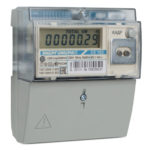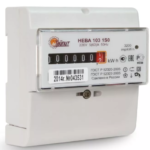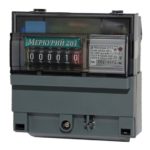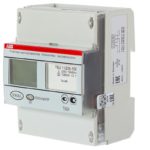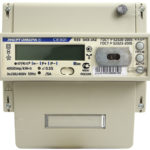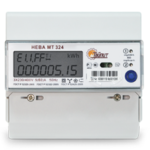Each room in which electricity is supplied has an electricity meter. The only exceptions can be those structures that are equipped with a completely autonomous system, for example, wind turbines and solar panels.
Types of electricity meters
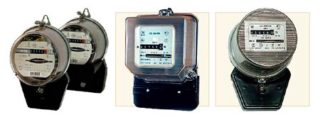
An electric meter is a metering device for the consumption of AC and DC electricity.
There are two types of these devices: electronic and induction models. They all differ in the principle of their work, but this does not affect the accuracy of the calculations in any way, since each device is checked before sale and, if necessary, calibrated by employees of the relevant organizations. The companies are independent, so you shouldn't expect a catch in their activities. To make it easier to determine the appropriate type of electrical device in a particular case, you need to study in more detail the features of each.
Induction
This variety is widespread due to a large number of advantageous features. This is a traditional design with a rotating wheel. The work is based on the principles of the magnetic field. This field forms several coils - current and voltage. They set the disc in motion, which starts the counting mechanism.
Among the disadvantages is the accuracy of the counting. The margin of error is within the acceptable range, but the results could be better.
An essential advantage of the device is its long service life. Some manufacturers give a 10-15 year warranty for their devices.
Electronic
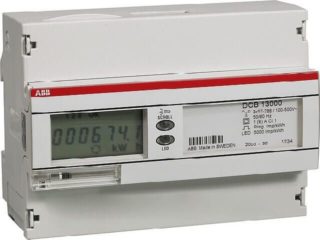
This variety can be considered relatively new. The principle of operation is based on measuring the voltage and current in the electrical network. There are no intermediate mechanisms, which ensures high precision of work. All readings are shown on a small display and are also stored in the built-in memory. More details about the advantages of the devices:
- Compact dimensions.
- It cannot be stopped or slowed down with a magnet.
- All models are equipped with a multi-tariff function.
- There is a built-in self-correction of readings.
- Convenient reading.
- The accuracy of the readings can be increased additionally; for this, a special microcircuit is installed.
Despite the large number of advantages, there are also disadvantages. The most significant is the high cost.
Single-rate and multi-rate types of electricity meters
Single-rate devices can be called traditional. These are devices that all residents of the post-Soviet space are used to.
Multi-tariff meters in Russia are new, since they have come into the use of consumers relatively recently. The main task of such a device is to reduce the financial costs of consumers. The essence of the savings lies in the difference in the cost of electricity from the time of day. At night and in the morning, it is less than in the evening.
Automatic type of electricity meter
The automatic type of electricity meter is a kind of electronic models. Its peculiarity lies in the automatic transfer of data without the participation of homeowners. The process takes place in a timely manner, without losing personal time.Such devices are not yet very common in Russia, but experts suggest that in 10-15 years they will be in every second apartment.
Advantages and disadvantages of multi-tariff
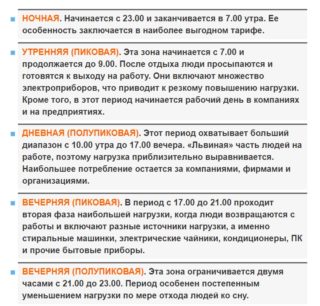
New metering devices have their own design features, as well as advantages and disadvantages that are required to be familiarized with when choosing a device. The advantages include:
- Environmental friendliness. The amount of harmful and poisonous emissions into the atmosphere decreases.
- Tangible savings in the family budget. Experience shows that the device pays for itself in one year.
- Facilitating the operation of power plants: saving fuel, reducing the cost of repairs and maintenance.
Of the disadvantages of devices, it is worth highlighting only the need to adjust to the meter's tariffs. If you neglect this, the amount of expenses will not decrease.
Accuracy class of devices and their power
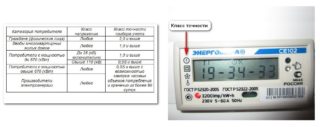
The accuracy class of the device as a percentage calculates the calculation error. Today, you can use electric meters with an accuracy class of at least 2.0.
Another important parameter of work is power. It is taken into account even when choosing a device, based on the daily consumption of electricity - the total load on the electrical circuit in an apartment, house. The range includes meters with a current load from 5 to 100 amperes.
Conditions of use and fastening methods
Modern metering devices are fixed on a special DIN rail or bolts.
Taking into account the working conditions, the equipment is divided into all-weather, intended for outdoor use, and used only in heated and dry rooms. The cost of the latest models is lower.
Which model is better to choose
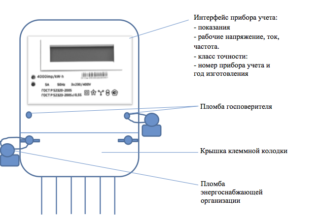
When choosing a device for metering consumed electricity, it is important that the requirements of GOST are taken into account:
- The model must be entered in the general register of metering devices approved in the Russian Federation, and also have an unexpired inspection certificate.
- The accuracy class must comply with the regulated regulatory legal acts (not lower than 2.0).
- Each device must have a seal with a state standard stamp on the cover of the terminal contacts. If the meter is installed for the first time, you need to make sure that the seal is not older than 2-3 years.
To simplify the selection process, you should familiarize yourself with the rating of the best models.
| Single tariff, single phase |
|
| Multi-tariff, single-phase |
|
| Three-phase, single rate |
|
| Three-phase, multi-tariff |
|
The choice of an electric meter should be approached with all responsibility, otherwise the readings may be incorrect, which will lead to penalties from organizations.

